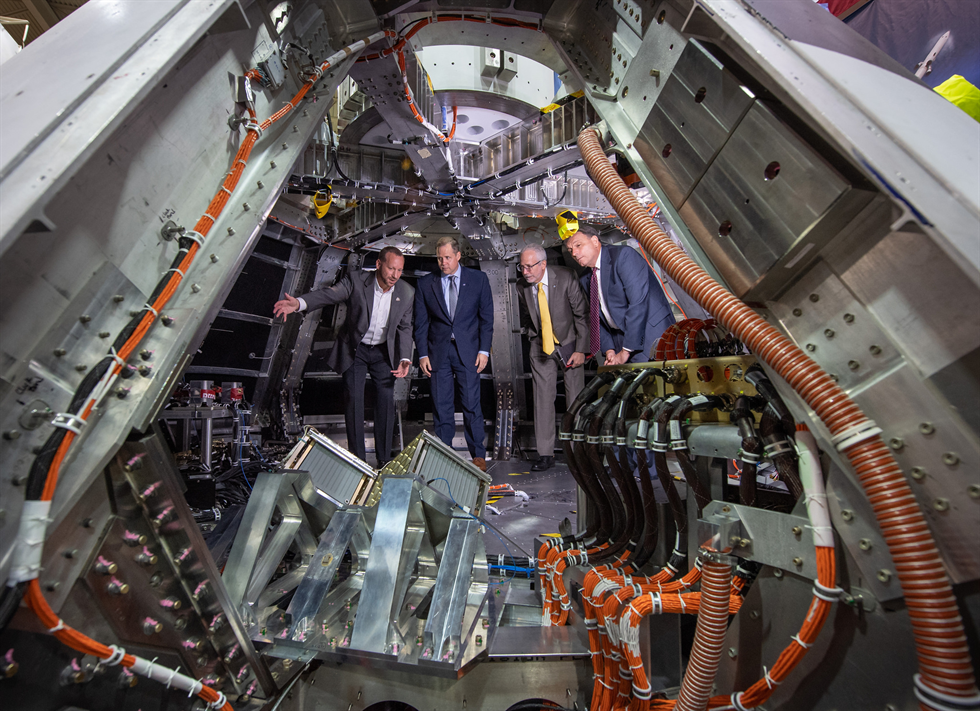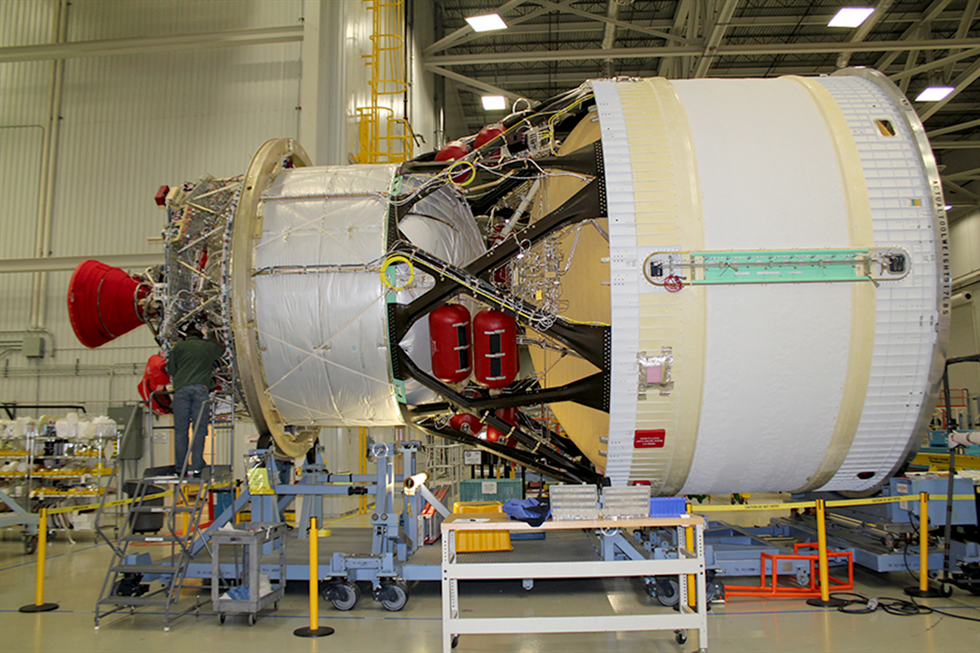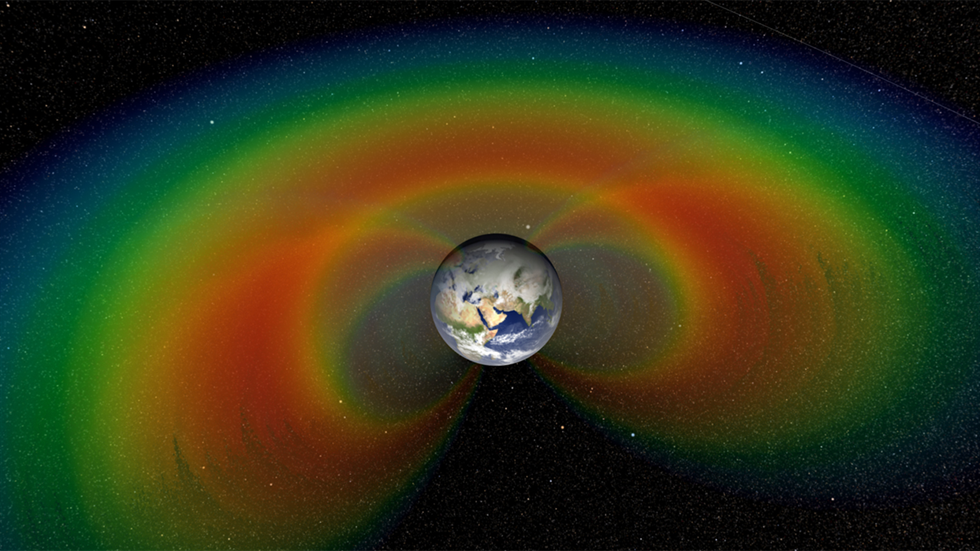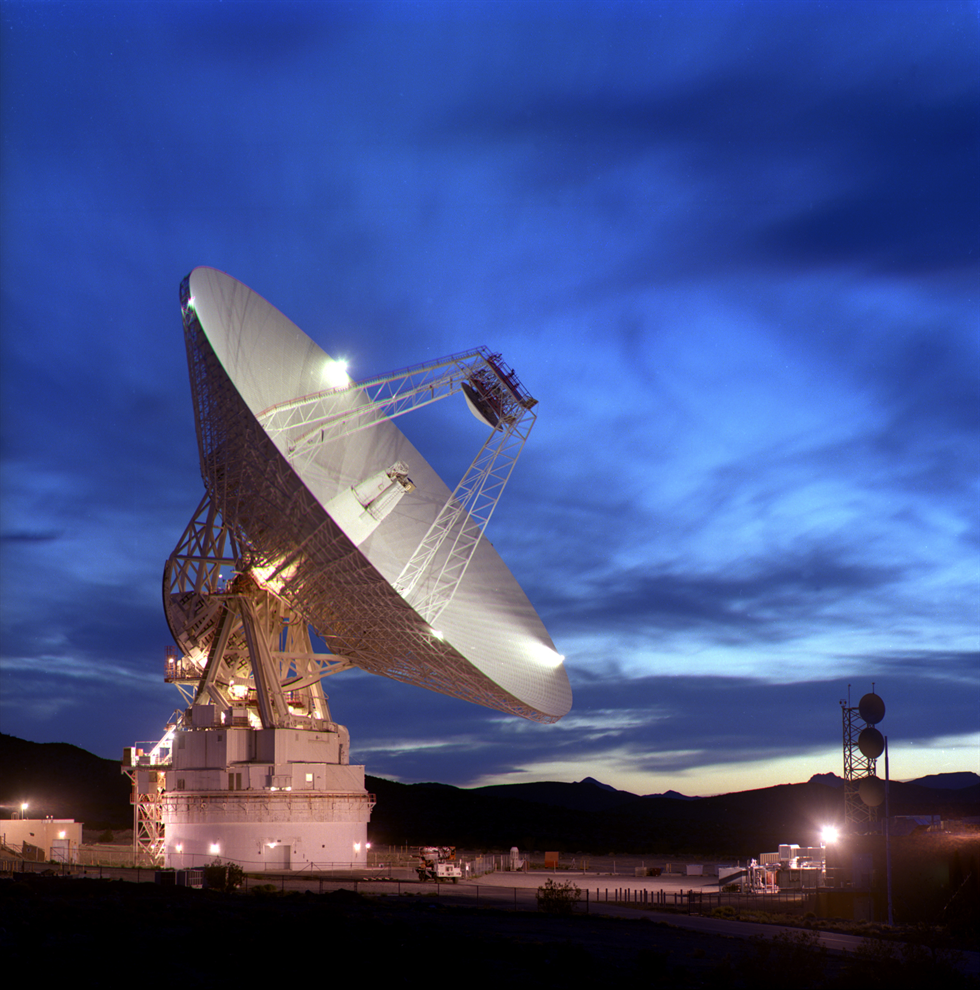Top 5 technologies needed for a spacecraft to survive deep space
2018-08-16
Spacecraft built for human forays into deep space require an array of features to keep it and a crew inside safe. Both distance and duration demand that spacecraft must have systems that can reliably operate far from home, be capable of keeping astronauts alive in case of emergencies and still be light enough that a rocket can launch it.
Missions near the Moon will start when NASA’s Orion spacecraft leaves Earth atop the world’s most powerful rocket, NASA’s Space Launch System. After launch, Orion will travel beyond the Moon to a distance more than 1,000 times farther than where the International Space Station flies in low-Earth orbit, and farther than any spacecraft built for humans has ever ventured. To accomplish this feat, Orion has built-in technologies that enable the crew and spacecraft to explore far into the solar system.
1. Systems to live and breathe
As humans travel farther from Earth for longer missions, the systems that keep them alive must be highly reliable while taking up minimal mass and volume. Orion will be equipped with advanced environmental control and life support systems designed for the demands of a deep space mission. A high-tech system already being tested aboard the space station will remove carbon dioxide and humidity from inside Orion.
The system also saves volume inside the spacecraft. Without such technology, Orion would have to carry many chemical canisters that would otherwise take up the space of 127 basketballs (or 32 cubic feet) inside the spacecraft—about 10 percent of crew livable area. Orion will also have a new compact toilet, smaller than the one on the space station. Long-duration missions drive engineers to design compact systems not only to maximize available space for crew comfort, but also to accommodate the volume needed to carry consumables like enough food and water for the entirety of a mission lasting days or weeks.
Distance from home also demands that Orion have spacesuits capable of keeping astronaut alive for six days in the event of cabin depressurization to support a long trip home.

Due to the compact build of the spacecraft, Orion requires that all systems needed to keep crew alive take up minimal mass and volume. Here, NASA Administrator Jim Bridenstine tours the inside of the Orion test crew capsule at NASA’s Johnson Space Center in Houston. Image Credit: NASA
2. Proper propulsion
The farther into space a vehicle ventures, the more capable its propulsion systems need to be to maintain its course on the journey with precision and ensure its crew can get home.
Orion has a highly capable service module that serves as the powerhouse for the spacecraft, providing propulsion capabilities that enable Orion to go around the Moon and back on its exploration missions. The service module has 33 engines of various sizes. The main engine will provide major in-space maneuvering capabilities throughout the mission, including inserting Orion into lunar orbit and also firing powerfully enough to get out of the Moon’s orbit to return home. The other 32 engines are used to steer and control Orion on orbit.

The propulsion system that gives the Orion spacecraft the in-space push needed to travel thousands of miles beyond the Moon and back completes major assembly at United Launch Alliance in Decatur, Alabama. The Boeing-designed interim cryogenic propulsion stage is a liquid oxygen/liquid hydrogen-based system that will give Orion an extra punch of power. Image Credit: ULA
3. The ability to hold off the heat
Going to the Moon is no easy task, and it’s only half the journey. The farther a spacecraft travels in space, the more heat it generates as it returns to Earth. Getting back safely requires technologies that can help a spacecraft endure speeds 30 times the speed of sound and heat twice as hot as molten lava (or half as hot as the sun).
When Orion returns from the Moon, it will be traveling nearly 25,000 mph, a speed that could cover the distance from Los Angeles to New York City in six minutes. Its advanced heat shield, made with a material called AVCOAT, is designed to wear away as it heats up. Orion’s heat shield is the largest of its kind ever built and will help the spacecraft withstand temperatures around 5,000 degrees Fahrenheit during reentry though Earth’s atmosphere.
Before reentry, Orion will endure a 700-degree temperature range from about minus 150 to 550 degrees Fahrenheit. However, crews inside will comfortably enjoy a safe and stable interior temperature of about 77 degrees Fahrenheit.

Inside the Neil Armstrong Operations and Checkout Building high bay at NASA’s Kennedy Space Center in Florida, technicians assist as a crane lifts the Orion heat shield for Exploration Mission-1 away from the base of its shipping container. Image Credit: NASA/Dimitri Gerondidakis
4. Radiation protection
As a spacecraft travels beyond Earth’s magnetic field, it will be exposed to a harsher radiation environment, with greater amounts of radiation from charged particles and solar storms that can cause disruptions to critical computers, avionics and other equipment. Humans exposed to large amounts of radiation can experience both acute and chronic health problems ranging from near-term radiation sickness to the potential of developing cancer in the long term.
Orion was designed with built-in system-level features to ensure reliability of essential elements of the spacecraft during potential radiation events. For example, Orion has four identical computers that each are self-checking, plus an entirely different backup computer, to ensure it can still send commands in the event of a disruption. Engineers have tested parts and systems to a high standard to ensure that all critical systems remain operable even under extreme circumstances.
Orion also has a makeshift storm shelter below the main deck of the crew module. In the event of a solar radiation event, NASA has developed plans for crew on board to create a temporary shelter inside using materials onboard.

An artist’s depiction, with cutaway section of the two giant donuts of radiation called the Van Allen Belts, that surround Earth. Image Credit: NASA/Goddard Space Flight Center/Scientific Visualization Studio
5. Constant communication and navigation
Spacecraft venturing far from home go beyond the Global Positioning System in space and above communication satellites in Earth orbit. To talk with mission control in Houston, Orion’s communication and navigation systems will switch from NASA’s Tracking and Data Relay Satellites system, used by the International Space Station, and communicate through the Deep Space Network.
Orion also has backup communication and navigation systems to help the spacecraft stay in contact with the ground and orient itself if its primary systems fail. The backup navigation system, a relatively new technology called optical navigation, uses a camera to take pictures of the Earth, Moon and stars and autonomously triangulate Orion’s position from the photos. Its backup emergency communications system also doesn’t rely on the primary system or antennae for high-rate data transfer.

The Deep Space Network supports NASA and non-NASA missions that explore the furthest points of our solar system. Image Credit: NASA
Want more? Read the article in a longer format here.
Or, if you prefer listening to reading, Houston, We Have a Podcast is covering the five hazards of deep space. Catch Episode 57 on “Hazard 1: Radiation,” and stay tuned for the rest of the series.
Missions near the Moon will start when NASA’s Orion spacecraft leaves Earth atop the world’s most powerful rocket, NASA’s Space Launch System. After launch, Orion will travel beyond the Moon to a distance more than 1,000 times farther than where the International Space Station flies in low-Earth orbit, and farther than any spacecraft built for humans has ever ventured. To accomplish this feat, Orion has built-in technologies that enable the crew and spacecraft to explore far into the solar system.
1. Systems to live and breathe
As humans travel farther from Earth for longer missions, the systems that keep them alive must be highly reliable while taking up minimal mass and volume. Orion will be equipped with advanced environmental control and life support systems designed for the demands of a deep space mission. A high-tech system already being tested aboard the space station will remove carbon dioxide and humidity from inside Orion.
The system also saves volume inside the spacecraft. Without such technology, Orion would have to carry many chemical canisters that would otherwise take up the space of 127 basketballs (or 32 cubic feet) inside the spacecraft—about 10 percent of crew livable area. Orion will also have a new compact toilet, smaller than the one on the space station. Long-duration missions drive engineers to design compact systems not only to maximize available space for crew comfort, but also to accommodate the volume needed to carry consumables like enough food and water for the entirety of a mission lasting days or weeks.
Distance from home also demands that Orion have spacesuits capable of keeping astronaut alive for six days in the event of cabin depressurization to support a long trip home.

Due to the compact build of the spacecraft, Orion requires that all systems needed to keep crew alive take up minimal mass and volume. Here, NASA Administrator Jim Bridenstine tours the inside of the Orion test crew capsule at NASA’s Johnson Space Center in Houston. Image Credit: NASA
2. Proper propulsion
The farther into space a vehicle ventures, the more capable its propulsion systems need to be to maintain its course on the journey with precision and ensure its crew can get home.
Orion has a highly capable service module that serves as the powerhouse for the spacecraft, providing propulsion capabilities that enable Orion to go around the Moon and back on its exploration missions. The service module has 33 engines of various sizes. The main engine will provide major in-space maneuvering capabilities throughout the mission, including inserting Orion into lunar orbit and also firing powerfully enough to get out of the Moon’s orbit to return home. The other 32 engines are used to steer and control Orion on orbit.

The propulsion system that gives the Orion spacecraft the in-space push needed to travel thousands of miles beyond the Moon and back completes major assembly at United Launch Alliance in Decatur, Alabama. The Boeing-designed interim cryogenic propulsion stage is a liquid oxygen/liquid hydrogen-based system that will give Orion an extra punch of power. Image Credit: ULA
3. The ability to hold off the heat
Going to the Moon is no easy task, and it’s only half the journey. The farther a spacecraft travels in space, the more heat it generates as it returns to Earth. Getting back safely requires technologies that can help a spacecraft endure speeds 30 times the speed of sound and heat twice as hot as molten lava (or half as hot as the sun).
When Orion returns from the Moon, it will be traveling nearly 25,000 mph, a speed that could cover the distance from Los Angeles to New York City in six minutes. Its advanced heat shield, made with a material called AVCOAT, is designed to wear away as it heats up. Orion’s heat shield is the largest of its kind ever built and will help the spacecraft withstand temperatures around 5,000 degrees Fahrenheit during reentry though Earth’s atmosphere.
Before reentry, Orion will endure a 700-degree temperature range from about minus 150 to 550 degrees Fahrenheit. However, crews inside will comfortably enjoy a safe and stable interior temperature of about 77 degrees Fahrenheit.

Inside the Neil Armstrong Operations and Checkout Building high bay at NASA’s Kennedy Space Center in Florida, technicians assist as a crane lifts the Orion heat shield for Exploration Mission-1 away from the base of its shipping container. Image Credit: NASA/Dimitri Gerondidakis
4. Radiation protection
As a spacecraft travels beyond Earth’s magnetic field, it will be exposed to a harsher radiation environment, with greater amounts of radiation from charged particles and solar storms that can cause disruptions to critical computers, avionics and other equipment. Humans exposed to large amounts of radiation can experience both acute and chronic health problems ranging from near-term radiation sickness to the potential of developing cancer in the long term.
Orion was designed with built-in system-level features to ensure reliability of essential elements of the spacecraft during potential radiation events. For example, Orion has four identical computers that each are self-checking, plus an entirely different backup computer, to ensure it can still send commands in the event of a disruption. Engineers have tested parts and systems to a high standard to ensure that all critical systems remain operable even under extreme circumstances.
Orion also has a makeshift storm shelter below the main deck of the crew module. In the event of a solar radiation event, NASA has developed plans for crew on board to create a temporary shelter inside using materials onboard.

An artist’s depiction, with cutaway section of the two giant donuts of radiation called the Van Allen Belts, that surround Earth. Image Credit: NASA/Goddard Space Flight Center/Scientific Visualization Studio
5. Constant communication and navigation
Spacecraft venturing far from home go beyond the Global Positioning System in space and above communication satellites in Earth orbit. To talk with mission control in Houston, Orion’s communication and navigation systems will switch from NASA’s Tracking and Data Relay Satellites system, used by the International Space Station, and communicate through the Deep Space Network.
Orion also has backup communication and navigation systems to help the spacecraft stay in contact with the ground and orient itself if its primary systems fail. The backup navigation system, a relatively new technology called optical navigation, uses a camera to take pictures of the Earth, Moon and stars and autonomously triangulate Orion’s position from the photos. Its backup emergency communications system also doesn’t rely on the primary system or antennae for high-rate data transfer.

The Deep Space Network supports NASA and non-NASA missions that explore the furthest points of our solar system. Image Credit: NASA
Want more? Read the article in a longer format here.
Or, if you prefer listening to reading, Houston, We Have a Podcast is covering the five hazards of deep space. Catch Episode 57 on “Hazard 1: Radiation,” and stay tuned for the rest of the series.








